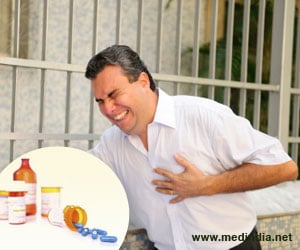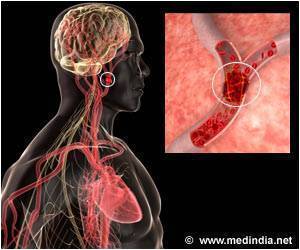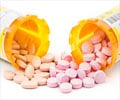- Katzung BG. Basic and Clinical Pharmacology 12th edition
- Harris K, Mant J. Potential impact of new oral anticoagulants on the management of atrial fibrillation-related stroke in primary care. International Journal of Clinical Medicine 2013; 67(7):647–655
- Winter Y, Dodel R, Korchounov A, Grond M, Oertel WH, Back T. Clinical and pharmacological properties of new oral anticoagulants for the prevention of cerebral thromboembolism: Factor Xa and thrombin inhibitors. World Journal of Neuroscience, 2012;2:7-14
- Shehab A et al. Novel oral anticoagulants and the 73rd anniversary of historical warfarin. Journal of the Saudi Heart Association 2016;28(1):31-45
What are Anticoagulants / Blood Thinners?
Blood travels in a liquid form within blood vessels. A break in the blood vessels causes the blood to leak out. However, excessive blood loss is prevented by the formation of a blood clot. Initially the blood cells called platelets stop the flow of blood, followed by which certain proteins in the blood called clotting factors form a clot and seal the break.
In some conditions, a clot can form within a normal blood vessel, which can obstruct the smooth flow of blood. Such a clot is unwanted. Medications used to prevent the formation of such clots are called anticoagulants or blood thinners. They prevent clotting or coagulation by interfering with the action of clotting factors. Another type of blood thinners called anti-platelet drugs which include aspirin and clopidogrel prevent the action of platelets. These will not be discussed here.

The processes that affect blood clotting involve a lot of enzymes and proteins. Together it is known as the coagulation cascade.
The anticoagulants used in clinical practice include the following:
- Unfractionated heparin, low molecular weight heparins like enoxaparin and dalteparin. Others like tinzaparin, danaparoid and ardeparin have been discontinued in the United States.
- Warfarin
- Rivaroxaban edoxaban and apixaban are novel oral anticoagulants that are direct inhibitors of the clotting factor Xa (Factor Xa is the activated form of the enzyme Factor X involved in the coagulation process)
- Fondaparinux, which is an indirect factor Xa inhibitor
- Bivalirudin, argatroban and dabigatran. These drugs directly block thrombin, the last clotting factor of the coagulation cascade. A similar drug, lepirudin has been discontinued in the United States. Another drug melagatran and its prodrug ximelagatran did not receive approval in the US due to a possibility of liver damage
Side effects of Anticoagulants / Blood Thinners
The older anticoagulants like heparin and warfarin have been time tested and their adverse effects are well known; more research is needed with the newer anticoagulants. Below are some of the side effects of anticoagulants:
- Excessive Bleeding: Bleeding is an extension of the pharmacological effect of anticoagulants. Thus all anticoagulants cause bleeding as a side effect, but to a variable degree.
- Bleeding can occur from several sites like the digestive tract, urinary tract, vagina, respiratory tract, skin and even the brain, which may be fatal. It may manifest as heavier menstrual flow, bleeding from gums, bruising, red or tarry stools, red or brown urine, or headache in case of a bleed in the brain. Some anticoagulants including heparin have caused bleeding in internal organs like the adrenal glands and the ovaries. An unexplained fall in blood pressure with dizziness while the patient is on an anticoagulant should warrant an investigation into the possibility of an internal bleed.
- Spinal or epidural bleeding followed by clots may occur in patients taking low molecular weight heparins, rivaroxaban, edoxaban, fondaparinux and dabigatran following spinal procedures like spinal puncture. This may result in paralysis
- The chances of bleeding can be reduced by choosing the right anticoagulant for the right patient and the right dosage. For example, fondaparinux should be avoided in patients with kidney disease and those with a weight of less than 50 kg since it increases the risk of bleeding in these patients. Dabigatran should be avoided in patients with severe kidney or liver disease. It should also not be used in patients with mechanical heart valves due to an increased chance of bleeding and clot formation
- Close monitoring of the patient could help to reduce the chances of bleeding. The effect of heparin is assessed by measuring the activated partial thromboplastin time (aPTT), while the effect of warfarin is measured using the international normalized ratio (INR). Low molecular weight heparins and drugs like dabigatran, rivaroxaban and apixaban usually do not require monitoring
- It is necessary to stop the excessive bleeding by stopping the anticoagulant and sometimes administering an antidote. The effect of heparin is neutralized by protamine sulfate while the effect of warfarin is reversed using vitamin K (phytonadione), fresh frozen plasma or prothrombin complex concentrates. Specific antidotes are not available for the newer anticoagulants like dabigatran, rivaroxaban and apixaban, which is a disadvantage
- Patients should be advised on the do’s and don’ts to prevent bleeding and to report any excessive bleeding immediately
- Heparin-induced thrombocytopenia: Unfractionated heparin can reduce platelet count and may result in the formation of blood clots within blood vessels. Therefore, platelet counts have to be routinely performed in patients receiving this form of heparin. Warfarin or low molecular weight heparins should not be used in these patients, while it can be substituted with argatroban. The risk for thrombocytopenia (reduction in platelet counts) is lower with low molecular weight heparins. Thrombocytopenia has also been reported following treatment with anticoagulants like apixaban, rivaroxaban and fondaparinux.
- Allergy: Allergic reactions can occur with anticoagulants, which may vary from itching and rashes to a severe reaction with breathing difficulties, fall in blood pressure and even death. Some patients who have been re-exposed to lepirudin have developed serious anaphylactic reaction. Warfarin has also been associated with serious allergic reactions.


- Tissue necrosis: Necrosis or damage to the skin or other tissues may occur while the patient is on warfarin. Necrosis of the skin usually occurs early during the treatment. In some cases, internal organs like the pancreas, spleen and liver may also be affected. Reduced blood flow to the toes can result in a condition called purple toes syndrome.
- Hair loss: Hair loss has been observed with heparin and warfarin treatment
- Osteoporosis: Osteoporosis or thinning of bones may occur with long term treatment with heparin. This makes the patient prone to spontaneous fractures. The risk is lower with low molecular weight heparins.
- Birth defects: Birth defects may occur if the mother receives warfarin especially during the first trimester of pregnancy. These include nasal defects, brain and eye defects, and growth retardation. Spontaneous abortion may also occur. Adverse effects are also noted when warfarin is taken in the second and third trimester. The fetus is at a risk of bleeding which can be fatal. Therefore, warfarin is contraindicated during pregnancy. In contrast, heparin is considered safer during pregnancy.
- Digestive tract disorders: Dyspepsia, which is discomfort and pain in the upper abdomen may occur with dabigatran due to the addition of tartaric acid to the capsule. Medications like omeprazole or ranitidine may be required to treat it. Other gastrointestinal side effects like diarrhea may also occur with dabigatran. Warfarin may cause changes in liver enzymes indicating liver damage. It also causes symptoms of nausea, diarrhea, bloating and taste perversion. Liver enzymes may also be altered by heparin, low molecular weight heparin, rivaroxaban, edoxaban and fondaparinux.

- Interaction with other drugs: Warfarin interacts with other drugs, which can increase or decrease the level of warfarin. The list of drugs that interfere with warfarin is extensive. Therefore, international normalized ratio or INR (assay that determines the clotting tendency of blood) should be monitored in patients when any new treatment or dietary changes are introduced in patients taking warfarin. Dabigatran interacts with other drugs like amiodarone, verapamil and quinidine. Rivaroxaban also has several drug interactions.
Anticoagulants also interact with other drugs that inhibit blood clotting. They increase the chances of bleeding when taken with medications like anti-platelet drugs, which can also cause bleeding, or non-steroidal anti-inflammatory drugs that can cause stomach ulcers.
The anti-platelet drugs used in clinical practice include:
- Aspirin
- Ticlopidine, clopidogrel, prasugrel, cangrelor, and ticagrelor
- Abciximab, eptifibatide and tirofiban
- Cilostazol
- Vorapaxar
Side effects of anti-platelet drugs include the following:
- Bleeding: As for anti-coagulants, anti-platelet drugs can also cause bleeding. Bleeding can occur from various sites like the digestive tract, urinary tract, in the abdomen and even around the brain. Aspirin also causes erosions in the stomach and peptic ulcers, which can bleed. The risk of major bleeding is high with the newer drugs, prasugrel and ticagrelor. Abciximab may cause bleeding by forming antibodies against platelets, and reducing platelet counts. Anti-platelet drugs are usually discontinued a few days prior to surgery to prevent bleeding. They should not be used in patients suffering from peptic ulcer or uncontrolled hypertension. Patients who bleed require temporary discontinuation of the anti-platelet drug, and sometimes intravenous fluids, and red cell and platelet transfusions.
- Digestive tract disorders: Aspirin causes gastric irritation which can give rise to ulceration and bleeding. Anti-stomach ulcer medications may reduce the risk of gastrointestinal irritation. Aspirin may also cause nausea, vomiting and liver damage in the form of hepatotoxicity and cholestatic jaundice. Reye’s syndrome occurs when aspirin is administered for viral infection, especially in children. The patient suffers from vomiting, liver dysfunction and neurological symptoms.
- Allergic reactions: Aspirin can cause allergic reactions with symptoms of sneezing and tearing of eyes, extending to more serious conditions like difficulty in breathing, swelling of subcutaneous tissues (angioedema), skin reactions like Steven’s Johnson syndrome and even anaphylaxis, which require treatment on an emergent basis. Aspirin-sensitive individuals often have nasal polyps and suffer from breathing problems. Allergic reactions can also occur with other antiplatelet drugs like ticlopidine and abciximab.
- Reduced blood counts: Ticlopidine reduces the counts of red blood cells, white blood cells, and platelets. The patient’s blood counts should be monitored during treatment with ticlopidine, especially in the first three months of treatment. Cilostazol may also reduce white blood cell count.
- Kidney damage: Aspirin can cause damage to the kidneys, which can result in conditions like interstitial nephritis, papillary necrosis, and may even progress to kidney failure.
- Nervous disorders: Aspirin can affect the nervous system resulting in symptoms like agitation, confusion, dizziness, tinnitus (abnormal sounds in the ear) and hearing loss. The side effects are usually noted at doses higher than what are used for anti-platelet activity. Symptoms like headache, dizziness and vertigo have been reported with cilostazol.
- Cardiac side effects: Cilostazol causes palpitations, arrhythmias and can cause heart attack in predisposed individuals. Cangrelor and abciximab can also cause cardiac side effects. Ticlopidine increases the blood levels or cholesterol and triglycerides, which can in turn affect the heart.
- Interaction with other drugs: Anti-platelet drugs can cause increased bleeding when administered with other drugs that can also cause bleeding.










